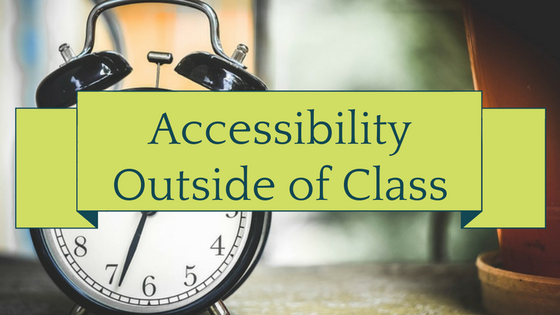
Today, professors are expected not only to give students their time and attention inside the classroom, but they are also expected to spend longer hours outside of class catering to students’ needs and giving individual feedback. However, methods of engaging students outside the classroom come with positives and pitfalls, so follow these tips to make sure students get the attention they need while still staying within appropriate boundaries.
Professors often will provide office hours in addition to classroom time. During office hours, students are free to visit the professor’s office to seek help on assignments or to pick the professor’s brain on topics raised in the course. Office hours can be critical to providing students individual feedback and attention, as well as providing students an avenue to get to know their professor better if they wish. Office hours should be scheduled either at a regular time each week or made available by appointment, if creating a standing commitment in the professor’s schedule is too difficult.
In addition, professors may extend office hours in the weeks leading up to lectures if students feel it will be helpful. This can give students to ask questions before the midterm and can better set them up for success on assessments. Another innovative way professors use office hours is by assigning each session of office hours to a recently-covered topic, which can help students overcome any nerves they have of attending hours. However, it is critical that students don’t use office hours as a replacement for attending class or lecture; extra office hours might be best announced during class as a reward for students who consistently attend lectures.
Finally, a challenge for professors that has recently arisen in the digital age is managing social media and maintaining appropriate boundaries with students. Connecting with students on Facebook or Twitter might have great benefits in terms of building relationships with students and becoming more approachable to students. Some things to consider might include your own level of comfort in having relationships with students on social media and an honest self-assessment of your ability to maintain professionalism and authority if students see your social media; however, be sure to check your school’s specific policies for social media usage and “friending” students or colleagues.

